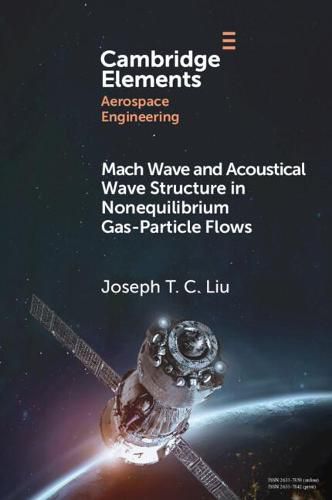Readings Newsletter
Become a Readings Member to make your shopping experience even easier.
Sign in or sign up for free!
You’re not far away from qualifying for FREE standard shipping within Australia
You’ve qualified for FREE standard shipping within Australia
The cart is loading…






In this Element, the gas-particle flow problem is formulated with momentum and thermal slip that introduces two relaxation times. Starting from acoustical propagation in a medium in equilibrium, the relaxation-wave equation in airfoil coordinates is derived though a Galilean transformation for uniform flow. Steady planar small perturbation supersonic flow is studied in detail according to Whitham’s higher-order waves. The signals owing to wall boundary conditions are damped along the frozen-Mach wave, and are both damped and diffusive along an effective-intermediate Mach wave and diffusive along the equilibrium Mach wave where the bulk of the disturbance propagates. The surface pressure coefficient is obtained exactly for small-disturbance theory, but it is considerably simplified for the small particle-to-gas mass loading approximation, equivalent to a simple-wave approximation. Other relaxation-wave problems are discussed. Martian dust-storm properties in terms of gas-particle flow parameters are estimated.
$9.00 standard shipping within Australia
FREE standard shipping within Australia for orders over $100.00
Express & International shipping calculated at checkout
Stock availability can be subject to change without notice. We recommend calling the shop or contacting our online team to check availability of low stock items. Please see our Shopping Online page for more details.
In this Element, the gas-particle flow problem is formulated with momentum and thermal slip that introduces two relaxation times. Starting from acoustical propagation in a medium in equilibrium, the relaxation-wave equation in airfoil coordinates is derived though a Galilean transformation for uniform flow. Steady planar small perturbation supersonic flow is studied in detail according to Whitham’s higher-order waves. The signals owing to wall boundary conditions are damped along the frozen-Mach wave, and are both damped and diffusive along an effective-intermediate Mach wave and diffusive along the equilibrium Mach wave where the bulk of the disturbance propagates. The surface pressure coefficient is obtained exactly for small-disturbance theory, but it is considerably simplified for the small particle-to-gas mass loading approximation, equivalent to a simple-wave approximation. Other relaxation-wave problems are discussed. Martian dust-storm properties in terms of gas-particle flow parameters are estimated.